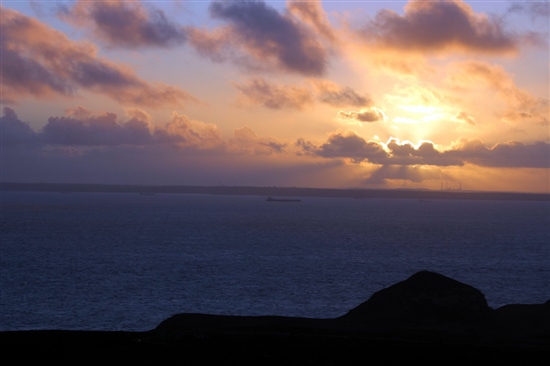The very unsettled weather continues with Storm Frank battering us as I type. This morning was very different though, there was even a sunrise worth getting up for!

It seems we aren't done with seal pups yet either. A new one was born around 17th December and has done well, it should wean no problem . Porth Lleuog is seeing adult numbers build as they undergo their winter moult. The rough weather has made life difficult…